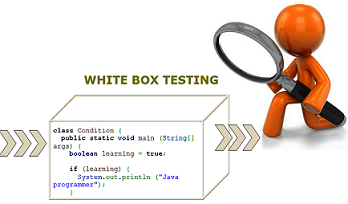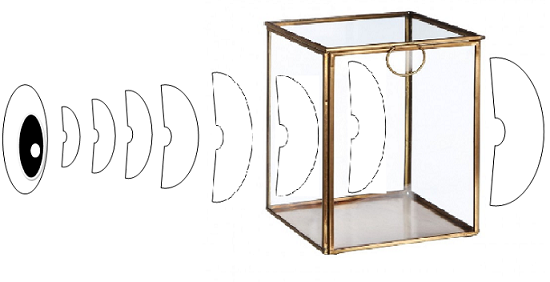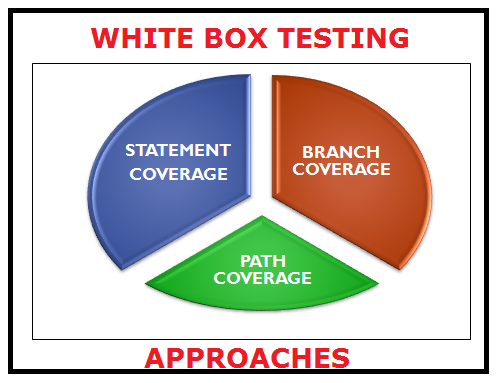


The term ‘White Box’ is used to refer to a transparent or glass box, through which the internal structure of a product is visible, and which allows the team to analyze, evaluate as well as explore the workings of an application’s internal structure. White Box Testing, which is also known as glass box testing, tests the internal structure of an application product through the derivation of test data from the program logic.
This type of software testing technique is also known by other names, such as open box testing, structural testing, logic driven testing and clear box testing.

An integral part of software testing life cycle (STLC), white box testing is a method of testing a software or application, wherein the test manager evaluates the internal structure, code, as well as the workings of the software. It ensures that no hidden errors impact the effectiveness and the functioning of the product, by thoroughly testing its code and other internal aspects. In short, white box testing guarantees an error free environment by validating and testing fragile or defect prone codes.
Few of the other important features of white box testing are:
As stated above, white box testing can be executed during various software testing phases to validate the effectiveness of the internal structure as well as to ensure the accuracy of the written code. The three major testing stages, where white box testing is applicable are:

White box testing is employed to check the following aspects of a software product:
White box testing can be executed with the assistance of three major techniques, which are mentioned below.

Read more about these white box testing approaches in our related article.
Apart from statement, branch, and path coverage, white box testing uses code coverage, which is another major testing technique that is used to validate the correctness of the code. As white box testing is a code based testing, code coverage allows it to effectively eliminate gaps in the test case suites. Moreover, this technique enables the team to identify areas of the program that are not exercised by a particular set of test cases and ensures that the test cases are actually testing all lines of code. Furthermore, the criteria for code coverage is also considered by the team in white box test design technique, which are:
Furthermore, the criteria for code coverage is also considered by the team in white box test design technique, which are:
White-box testing follows a designated testing process, wherein each aspect of the software is tested thoroughly by the team or the test manager, to ensure its accuracy as well as quality. The process of white box testing includes five important steps, which are:

To understand the significance of white box testing in software testing life cycle (STLC), it is important to compare it with its counterparts- black box testing and gray box testing. By doing so, one can garner more information about white box testing and enhance their basic knowledge about it. Therefore, following is a comparison of WhiteBox, Black Box, and Gray Box Testing.
| White Box Testing | Black Box Testing | Grey Box Testing |
| 1. Testers have full knowledge of the internal structure of the software. | 1. Black box testing is not concerned about the internal workings of the software, hence, it has no knowledge of it. | 1. Limited knowledge about the internal structure as well as working of the software is available. |
| 2. Known as glass box, open box, or code based testing. | 2. Known as closed box or data driven testing. | 2. It is also known as translucent testing. |
| 3. It verifies the security gaps in the code and internal structure of the software. | 3. It is mainly concerned with the external functionality and behavior of the software. | 3. Here, both, white and black box testing are used by the team of testers. |
| 4. Performed by a team of software testers and developers. | 4. This type of testing is either performed by the testers/developers or the end users. | 4. Like black box testing, gray box testing is also performed by end users and testers. |
| 5. It is one of the most exhaustive and time-consuming testing technique. | 5. It is time and cost effective testing technique. | 5. It is partially time consuming and comprehensive. |
Get a better insight into the differences between these testing techniques from our article White Box Testing VS Gray Box Testing VS Black Box Testing.
A software testing process can be improved and simplified with the aid of various automated tools available in the market. Similarly, to enhance the accuracy as well as the quality of testing, software testers around the world perform white box testing with the assistance of various tools like:
Get a detailed list of the most renowned white box testing tools here.In nutshell, it may be inferred that the use of white box testing approach, for the early identification of faults in code or in detecting dead code(s), not only ensures the higher quality & lesser complexity of the code but also minimizes the probability of occurrence of any unexpected issue or defect at a later stage in future. Hence, by implementing it during early stages of software development life cycle, the team of testers can ensure optimum quality as well as the efficiency of the product.
Advertisement: